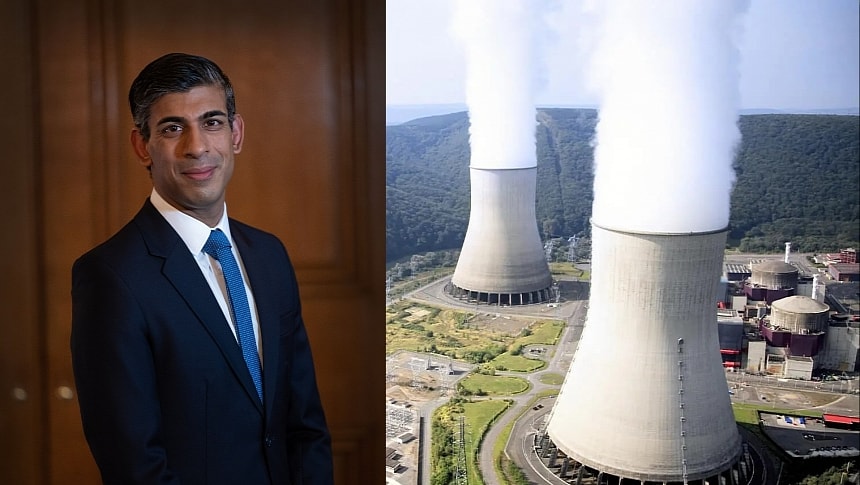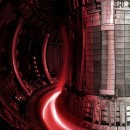As per a report first broken by Reuters, it appears that Great Britain, a nation that once turned its back on nuclear energy in the 2000s, is preparing to dramatically and radically reverse course on its plan for the national energy grid. In a press release given by UK Prime Minister Rishi Sunak, the question of how to power the nation in a post-carbon energy infrastructure is causing top brass to consider investments in the country's aging nuclear energy infrastructure to the tune of over $200 million in future investments.
Once the gold standard for nuclear energy production alongside the United States, the UK laid claim to operating the very first commercial nuclear fission reactors out of the Calder Hall facility in Seascale, Cumbria, England, starting in 1956. By the late 1990s, nuclear fission accounted for an impressive 26 percent of Great Britain's energy GDP, alongside natural reserves of coal and natural gas, as well as a considerable level of imported fossil fuels, most notably from the Russian Federation.
In the time since the 90s, international anti-nuclear coalitions have maintained a strong grip on European energy policy. Nations like Italy, Germany, Portugal, Spain, Austria, and Norway have all but shut down their respective nuclear energy infrastructure in the last quarter century. In this way, Great Britain was much the same, having downturned to only producing 19 percent of its energy GDP through nuclear means by 2012. With vital supplies of Russian natural gas and oil now under constant threat from Vladimir Putin, Prime Minister Sunak and his cabinet are now scrambling to turn the tides against nuclear energy as they had been since the Chornobyl Disaster almost 40 years ago.
"Safeguarding the future of our nuclear deterrent and nuclear energy industry is a critical national endeavour," declared Sunak, leader of the UK since late October 2022. "Today we usher in the next generation of our nuclear enterprise, which will keep us safe, keep our energy secure, and keep our bills down for good." As the cost of energy in Europe reaches a fever pitch and with tens of millions on the ragged edge of freezing across the continent each winter, Prime Minister Sunak's drive to create 40,000 new nuclear energy jobs by 2030 is just the first step towards dramatically reversing course on once set-in-stone British energy policy.
Adding onto the initiative, Sunak also mentioned how nuclear submarine propulsion would be a key component in Britain's fissile resurgence. With key allies like the US and Australia due to operating novel nuclear subs by the end of the decade at the earliest, it could very well be British personnel and British infrastructure forged under this new legislation that gets these submarines out of the dry dock and into hostile waters as soon as possible.
In the time since the 90s, international anti-nuclear coalitions have maintained a strong grip on European energy policy. Nations like Italy, Germany, Portugal, Spain, Austria, and Norway have all but shut down their respective nuclear energy infrastructure in the last quarter century. In this way, Great Britain was much the same, having downturned to only producing 19 percent of its energy GDP through nuclear means by 2012. With vital supplies of Russian natural gas and oil now under constant threat from Vladimir Putin, Prime Minister Sunak and his cabinet are now scrambling to turn the tides against nuclear energy as they had been since the Chornobyl Disaster almost 40 years ago.
"Safeguarding the future of our nuclear deterrent and nuclear energy industry is a critical national endeavour," declared Sunak, leader of the UK since late October 2022. "Today we usher in the next generation of our nuclear enterprise, which will keep us safe, keep our energy secure, and keep our bills down for good." As the cost of energy in Europe reaches a fever pitch and with tens of millions on the ragged edge of freezing across the continent each winter, Prime Minister Sunak's drive to create 40,000 new nuclear energy jobs by 2030 is just the first step towards dramatically reversing course on once set-in-stone British energy policy.
Adding onto the initiative, Sunak also mentioned how nuclear submarine propulsion would be a key component in Britain's fissile resurgence. With key allies like the US and Australia due to operating novel nuclear subs by the end of the decade at the earliest, it could very well be British personnel and British infrastructure forged under this new legislation that gets these submarines out of the dry dock and into hostile waters as soon as possible.



























